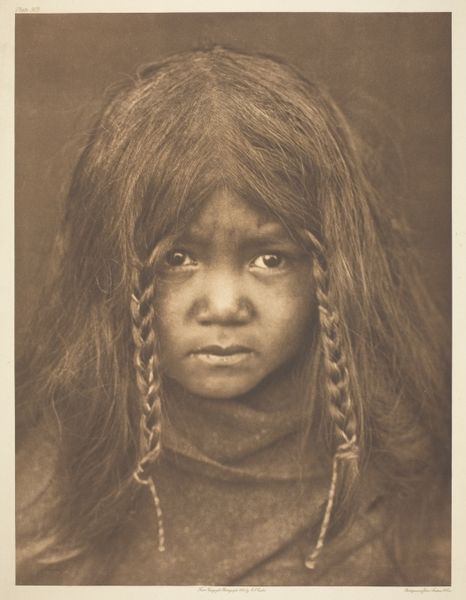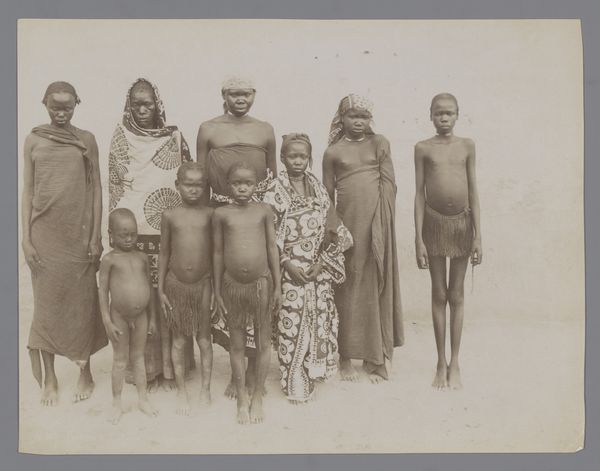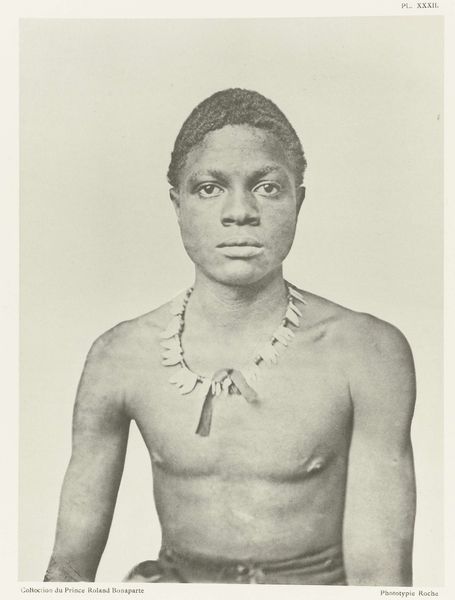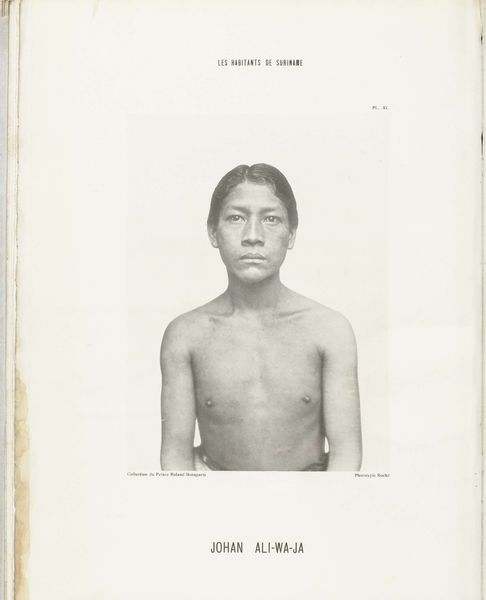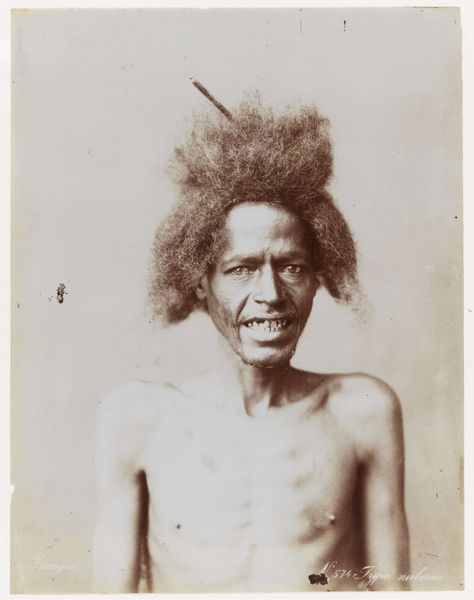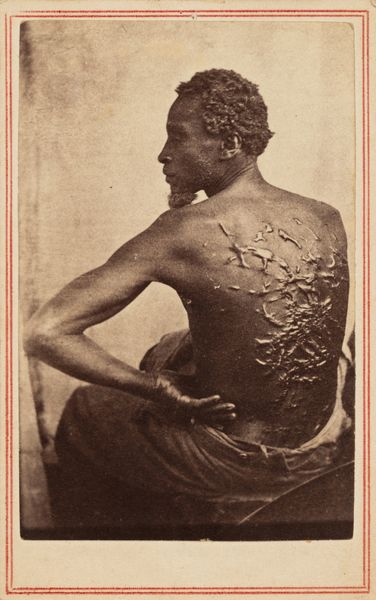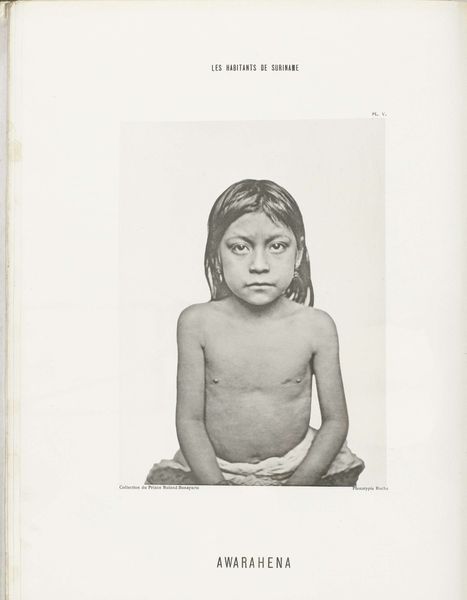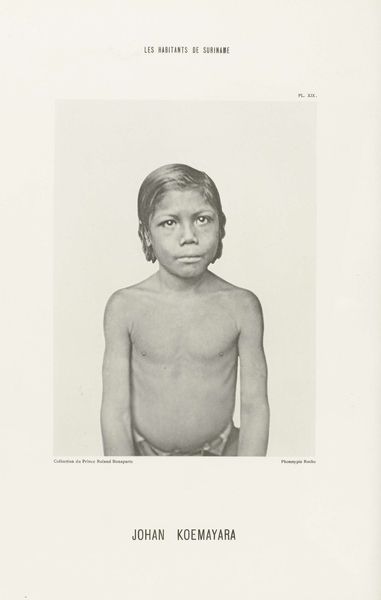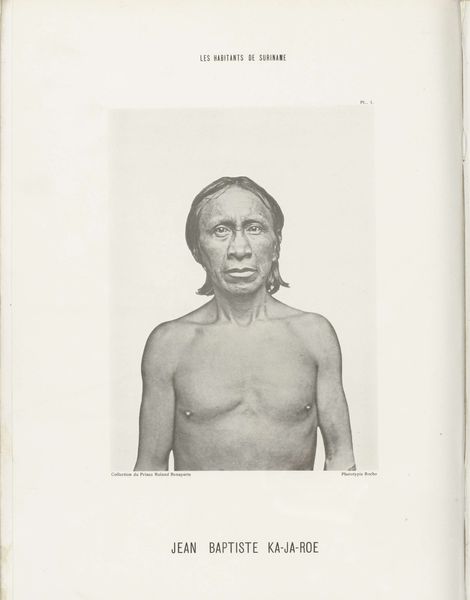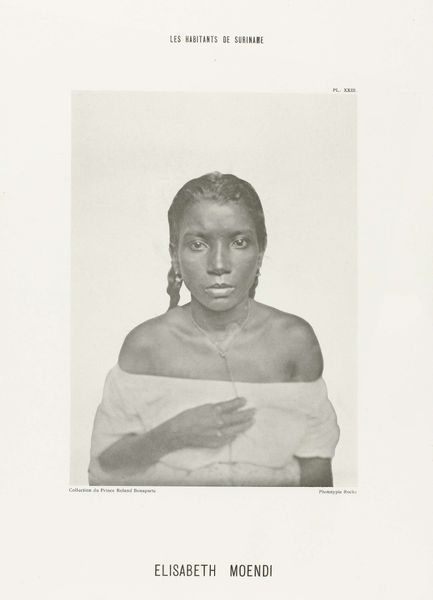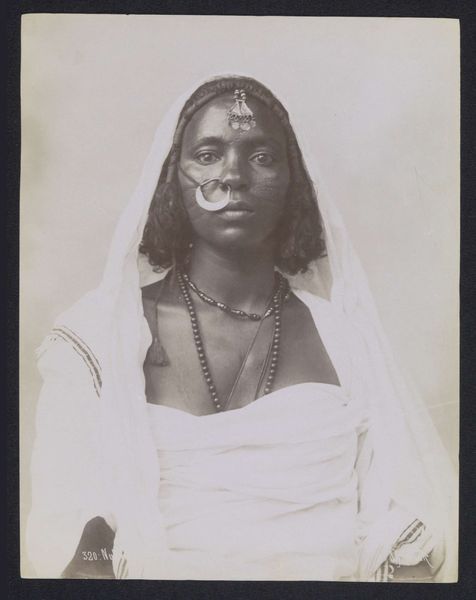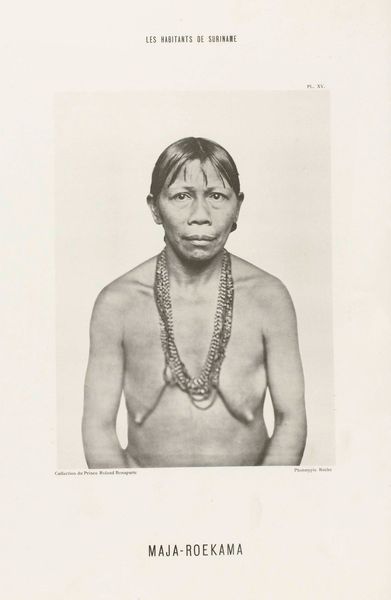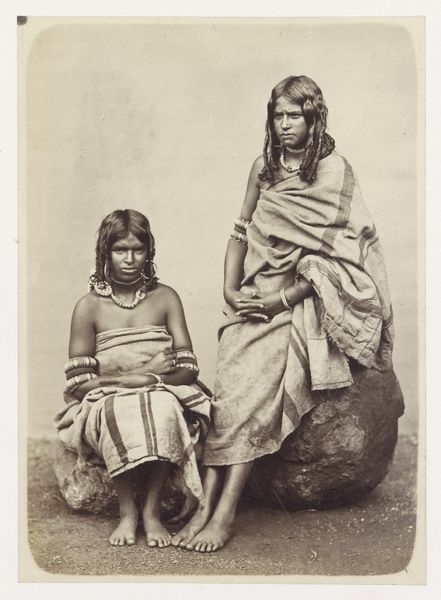
photography, albumen-print
#
portrait
#
african-art
#
photography
#
nude
#
albumen-print
#
realism
Dimensions: Image: 10 9/16 × 8 1/4 in. (26.9 × 21 cm) Mount: 13 11/16 × 9 5/16 in. (34.7 × 23.6 cm)
Copyright: Public Domain
Curator: Here we see an albumen print dating from 1853-54 entitled "Young Nuba Woman" by Pierre Trémaux. Editor: The immediate feeling is one of stark simplicity. The sepia tones create a soft, almost dreamlike quality, but there’s also a rawness to the image, a directness in her gaze. Curator: Absolutely. The image possesses the character of early ethnographic studies, rooted as it is in the 19th-century fascination with representing distant cultures. The “Nuba” are an ethnic group residing in the south of Kordofan in Sudan. This photograph serves as a document of a particular time, conveying much about our complex gaze onto other cultures. The necklace seems like it might be the primary thing this woman owns. It serves almost as her identifier as a human being. Editor: But whose gaze, precisely? And for what purpose? Consider the colonial context—photographs like this were often used to “classify” and “other” non-Western populations, perpetuating harmful stereotypes, regardless of the artist’s good intentions. The woman is stripped bare; we have robbed her of her history and dignity in a photograph which probably reinforced prejudiced sentiments in European society. I think the image challenges us to interrogate the power dynamics inherent in image-making. Who gets to look? Who gets to be seen and in what manner? This work evokes themes of power and exploitation for me. Curator: That’s a critical reading, positioning it within larger historical forces. Yet, could we also appreciate the image for its compositional grace, its subtle chiaroscuro that seems to reference the old masters and conveys much beauty about her pose? Is there a way to reconcile these contrasting perceptions? Can this object be seen as beautiful yet still hold dark connotations? Editor: Perhaps by constantly acknowledging its loaded history. The vulnerability in her expression is hard to ignore; there’s a profound humanity here which we should value. Yet the image also should serve as a reminder of our shared, and still-unequal, world. It would be easier to just view this image and move on, but these historical depictions continue to create long shadows. Curator: Indeed. Understanding the nuances enriches the photograph. Seeing symbols reflected through layers of history allows the image to endure for what it represents of human interactions then and today. Editor: A reminder that even what seems “simple” or “beautiful” can hold complex histories and uncomfortable truths. And it's our job to look closer.
Comments
No comments
Be the first to comment and join the conversation on the ultimate creative platform.
